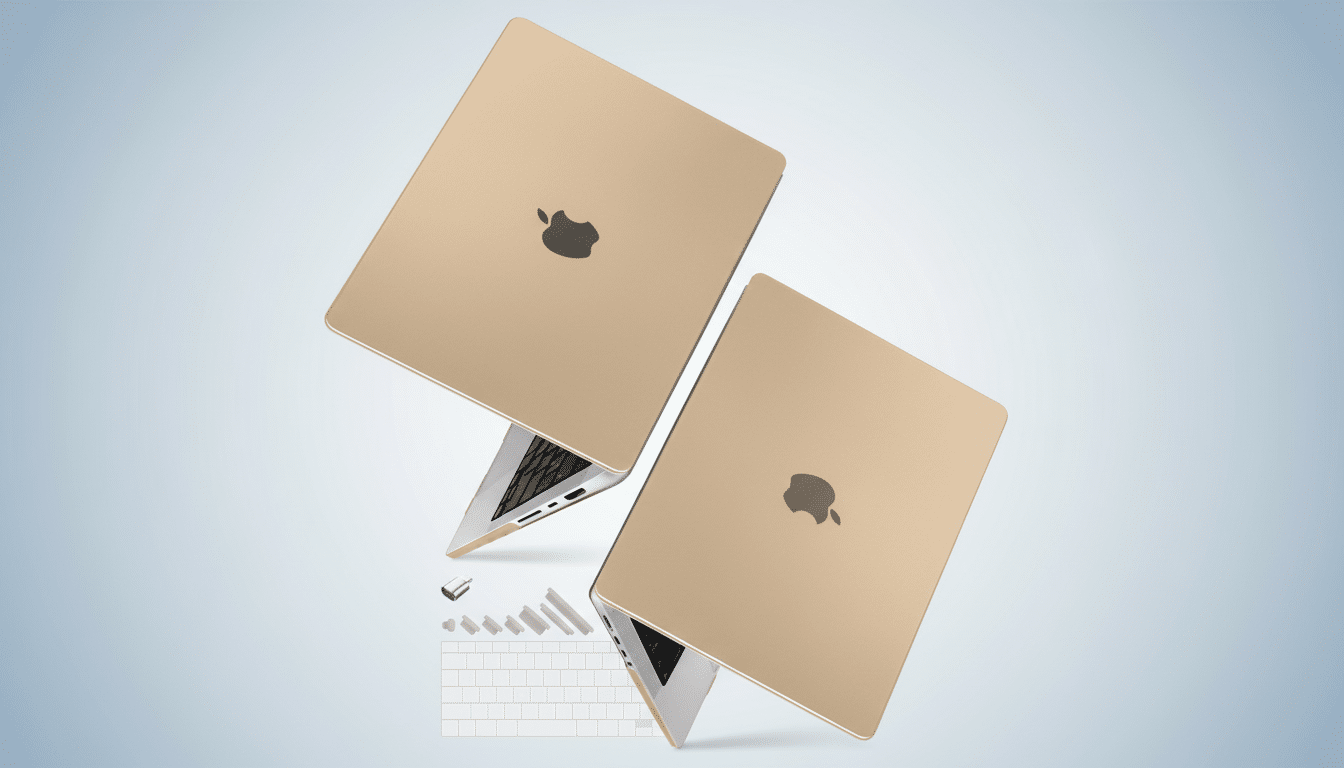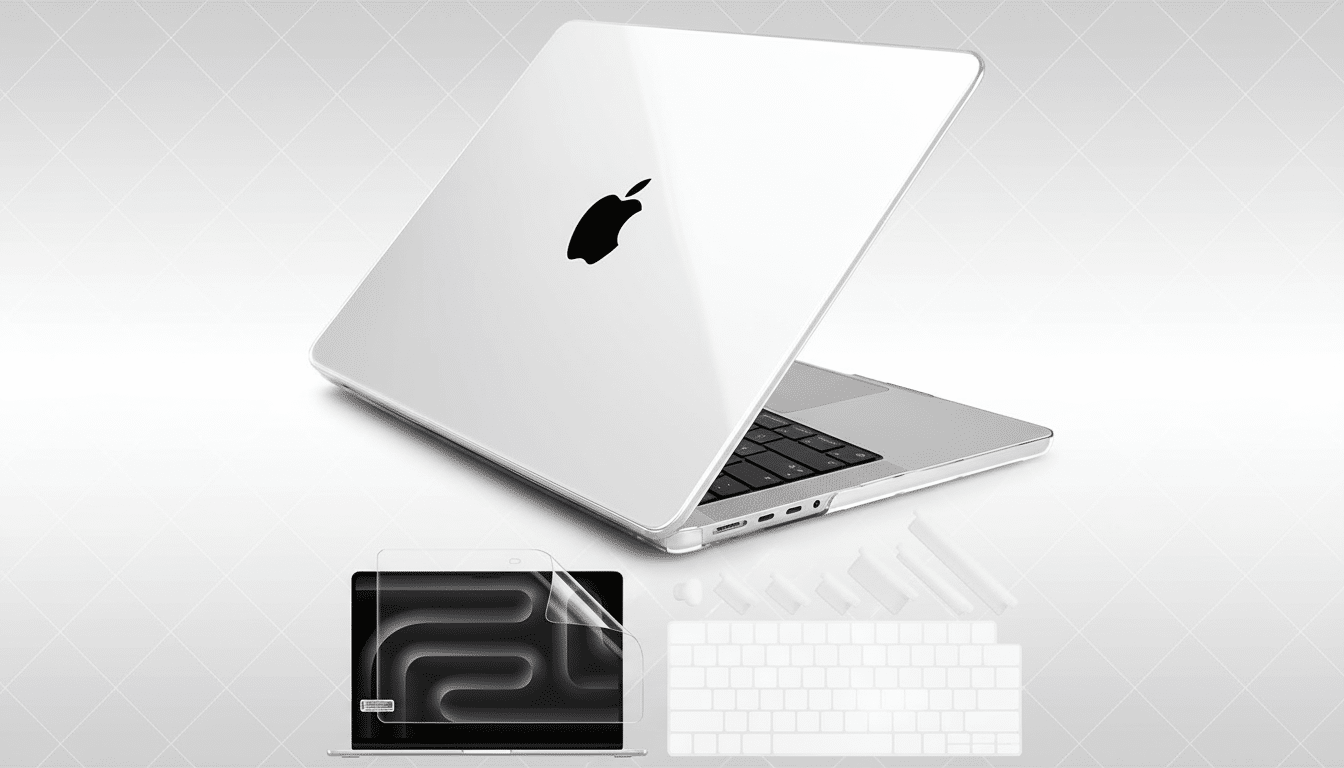Apple’s next 14-inch MacBook Pro with M5 chip seems imminent, and the evidence is starting to form into clear clues. Apple’s top marketing executive teased that something “powerful” was on the horizon on X, and a report from Bloomberg’s Mark Gurman suggests that the new base MacBook Pro will spearhead a trio of “Pro” hardware announcements. Here’s what that M5 MacBook Pro could potentially look like, if it arrives as soon as many are expecting.
What To Expect From The M5 MacBook Pro Update
Everything points to Apple placing the M5 into the current 14-inch MacBook Pro chassis, focusing on upgrading the processor rather than introducing a new design. That means a familiar military-grade aluminum finish for the body, a mini‑LED display with ProMotion technology, and a similar mix of ports for the base model as well, presumably: two Thunderbolt ports, HDMI out, an SDXC card slot, MagSafe charging, and a headphone jack.
- What To Expect From The M5 MacBook Pro Update
- Chipset Prospects and Performance Hints for M5
- Design, Battery Life and Ports on the New MacBook Pro
- AI Acceleration and Pro Workflows on the M5 MacBook Pro
- Related M5 Devices in the Pipeline Across Product Lines
- When It Drops, What To Watch For At The Announcement

Gurman’s reporting suggests this early M5 MacBook Pro will precede any M5 Pro or M5 Max models. In other words, anticipate a base boost in performance and efficiency first, with higher‑core‑count configurations for heavy pro workflows due to arrive later.
Chipset Prospects and Performance Hints for M5
The largest question mark is how much the M5 will step forward from the current MacBook Pro lineup’s M3. Apple’s M4 in the iPad Pro had already shown a next‑gen Neural Engine and enhanced GPU capabilities, so the M5 MacBook Pro should significantly raise the floor for CPU and AI performance on macOS.
There were unverified iPad leaks going around on the tech‑blogging circuit that revealed some early Geekbench 6 numbers associated with a likely M5‑class chip that suggested roughly low‑double‑digit gains in multi-core CPU performance and a hellaciously chunky bump in GPU throughput compared to M4. If that signals what’s to come on Mac, users could expect significantly faster project exports, better multitasking performance, and more consistent frame pacing in GPU‑accelerated apps. As ever, though, this is only part of the story; artificial benchmarks have never told the whole truth but are a useful direction sign.
On manufacturability, both industry analysts like TrendForce and disclosures from TSMC indicate 2‑nanometer chips are not in wide use in consumer hardware yet. That makes an advanced 3‑nanometer process the most likely basis for M5, biased toward efficiency gains. That usually means cooler thermals under sustained load and longer battery life under real‑world workflows for owners of a MacBook Pro.
Design, Battery Life and Ports on the New MacBook Pro
Don’t expect visible hardware changes. The existing 14‑inch MacBook Pro already ticked the boxes for display quality, speakers, and port variety. The story here is probably just efficiency: Apple historically manages to extract more compute per watt each generation. Even a small efficiency win can pay off in more hours of video playback between charges and less fan ramp‑up during code compiles, 4K timelines, or batch photo edits.
One thing to watch: base memory.

The current base MacBook Pro models have come under fire for 8GB of unified memory. If Apple were to increase starting memory — 16GB is a common community request — it would be able to increase the level of multitasking headroom directly accessible by more creators and developers. Apple hasn’t hinted at a change here, but it is one of the key issues that many will take issue with at launch.
AI Acceleration and Pro Workflows on the M5 MacBook Pro
On‑device AI is now central to platform roadmaps, and so a talking point for the M5 should be its Neural Engine and GPU. Anticipate quicker local model inference for mission‑critical tasks such as image generation, code completion, natural language capabilities, and video tools that draw on machine learning. The MacBook Pro could see some AI‑based features coming to the device without forcing the product to be dependent on cloud computing for a while, as Apple’s focus has been on privacy‑preserving, on‑device intelligence of late.
On the media front, Apple’s specialized engines like ProRes and hardware‑accelerated codecs are now table stakes. Any small improvement—faster AV1 hardware acceleration, additional simultaneous 4K and 8K streams, or faster render times in apps from Adobe, Blackmagic Design, and Apple’s own pro suite—would all add up for editors and colorists.
Related M5 Devices in the Pipeline Across Product Lines
Gurman’s report also leaves footprints of an expected M5 iPad Pro and updated mixed‑reality headsets in the same orbit as this MacBook Pro. Rumors suggest the tablet would also bump RAM and feature dual front‑facing cameras specially adapted for both portrait and landscape, but none of those changes are certain. The headset might concentrate on comfort and finish tweaks, plus enhanced input processing, versus a ground‑up overhaul. These might not be the headline today, but all of them underscore Apple’s efforts to reduce disparities in performance and features across its Pro line.
When It Drops, What To Watch For At The Announcement
Once the announcement hits, evaluate four factors:
- Claimed CPU and GPU boosts versus M3
- Neural Engine throughput and AI‑focused demos
- Battery life estimates in common work situations
- Base specs, particularly memory and storage
Continuity in pricing will also be crucial—if Apple keeps the line, an M5 MacBook Pro that’s faster and more efficient without a price rise could be the upgrade sweet‑spot many have been waiting for.
If the rumors are true, Apple’s next MacBook Pro isn’t going to be a rethink of what already works. It’s about pushing the silicon envelope again — quieter fans, longer runtimes, faster exports, and smarter on‑device intelligence in the same great design that our customers love. That’s the kind of “powerful” many professionals were waiting for.

